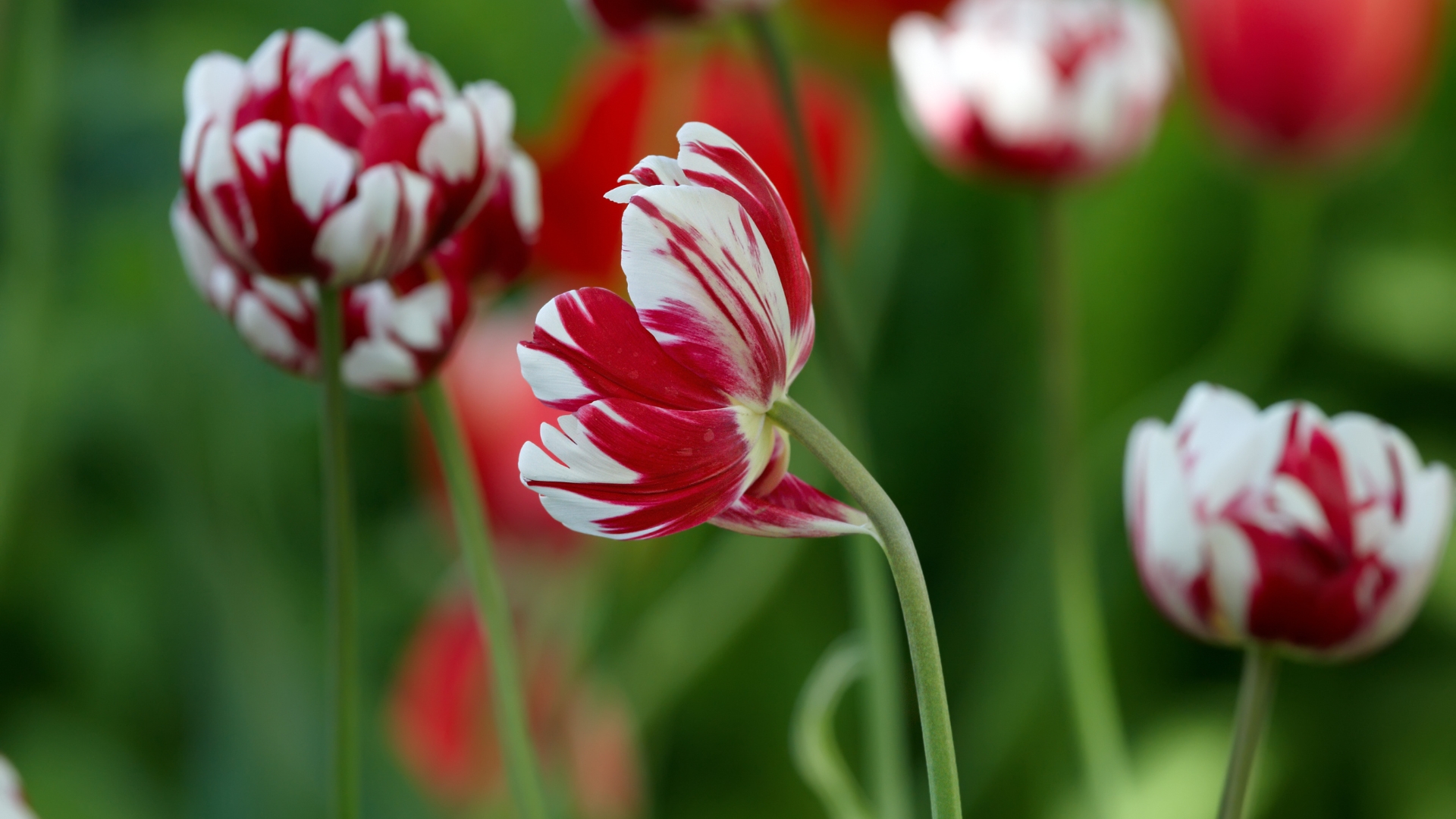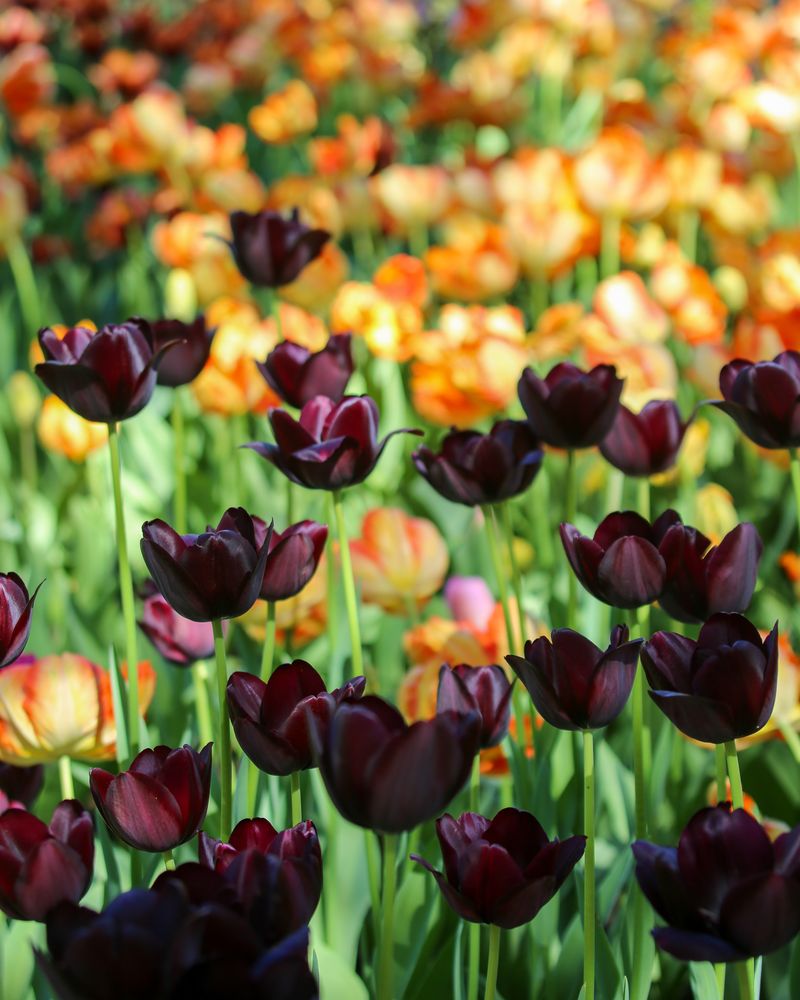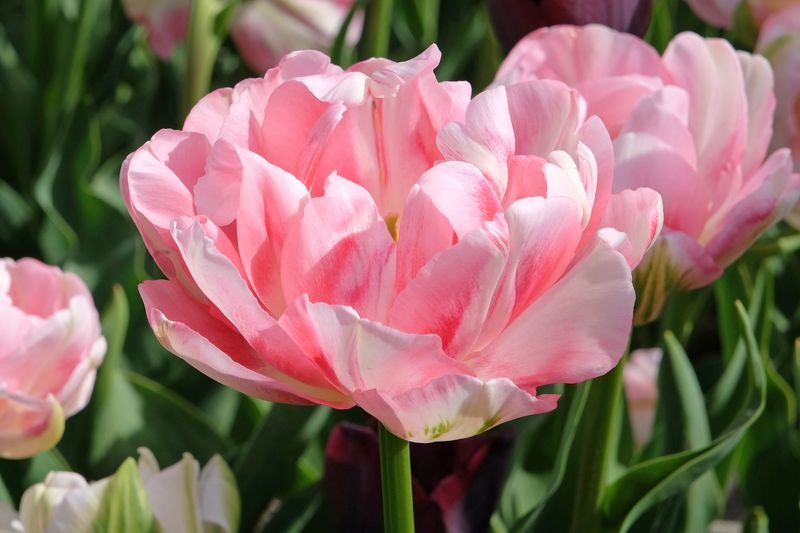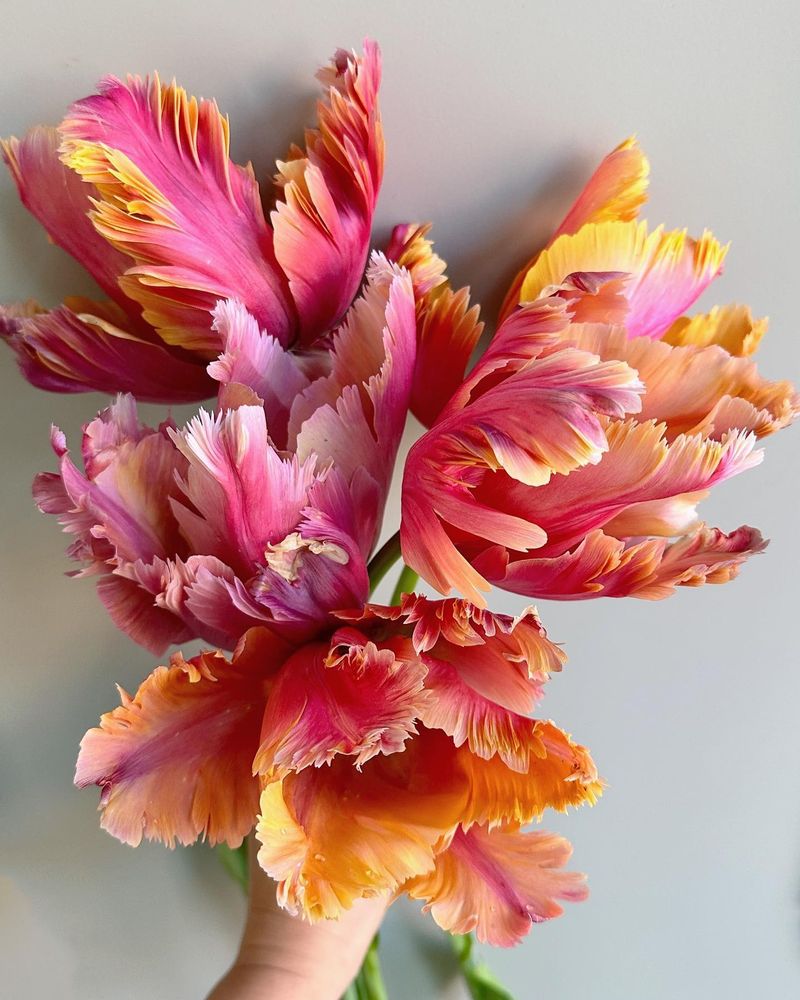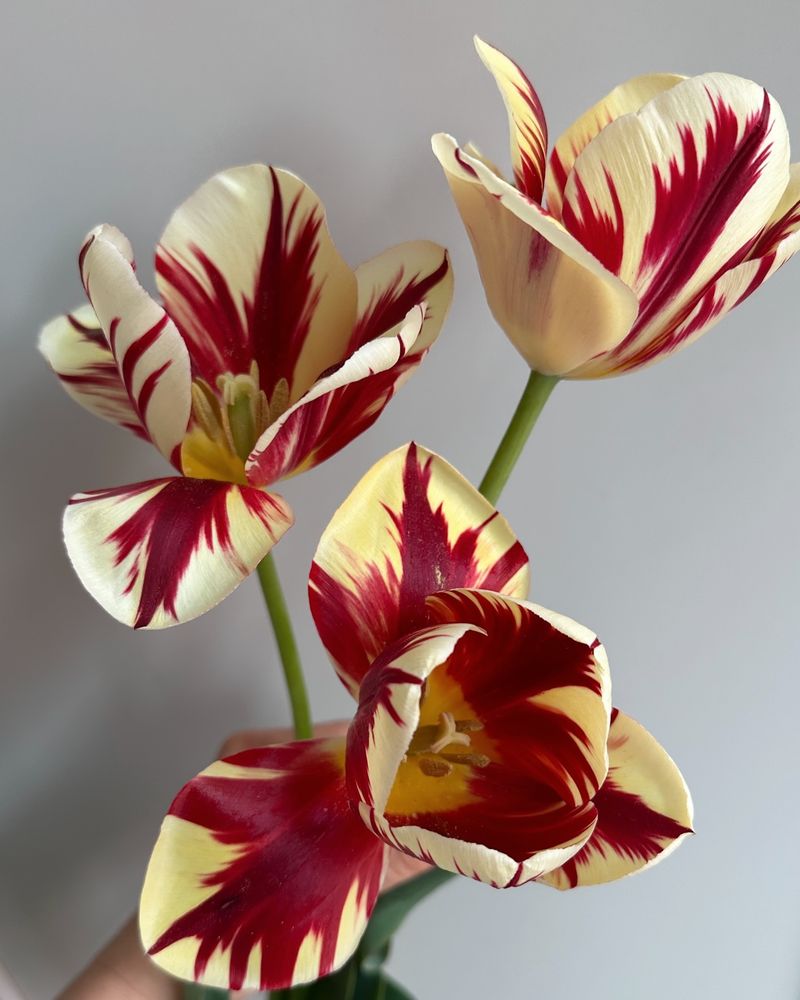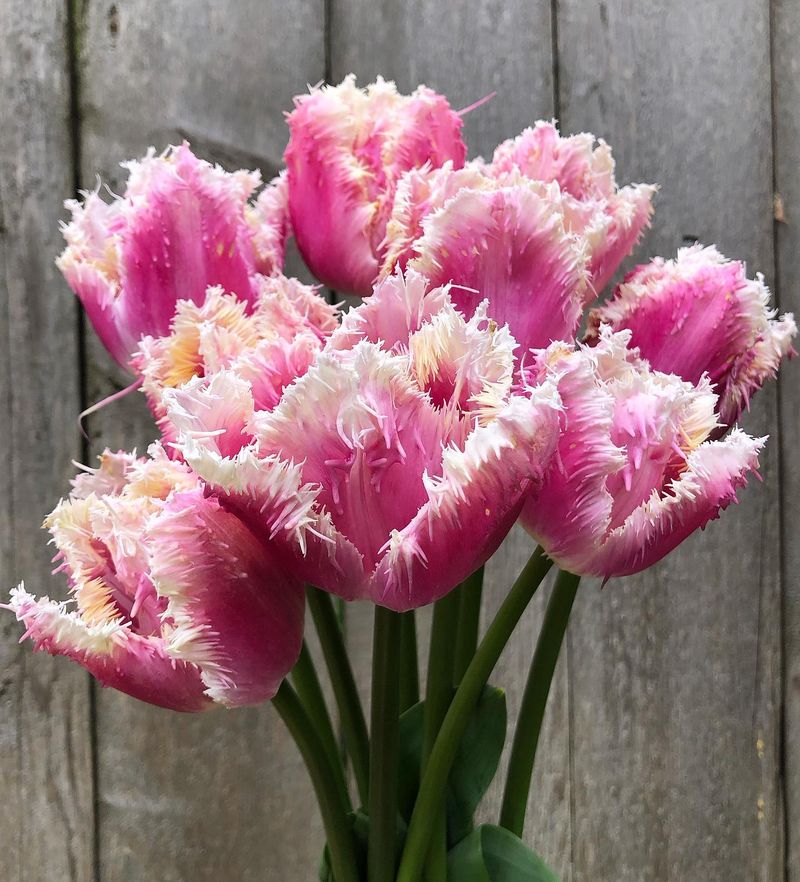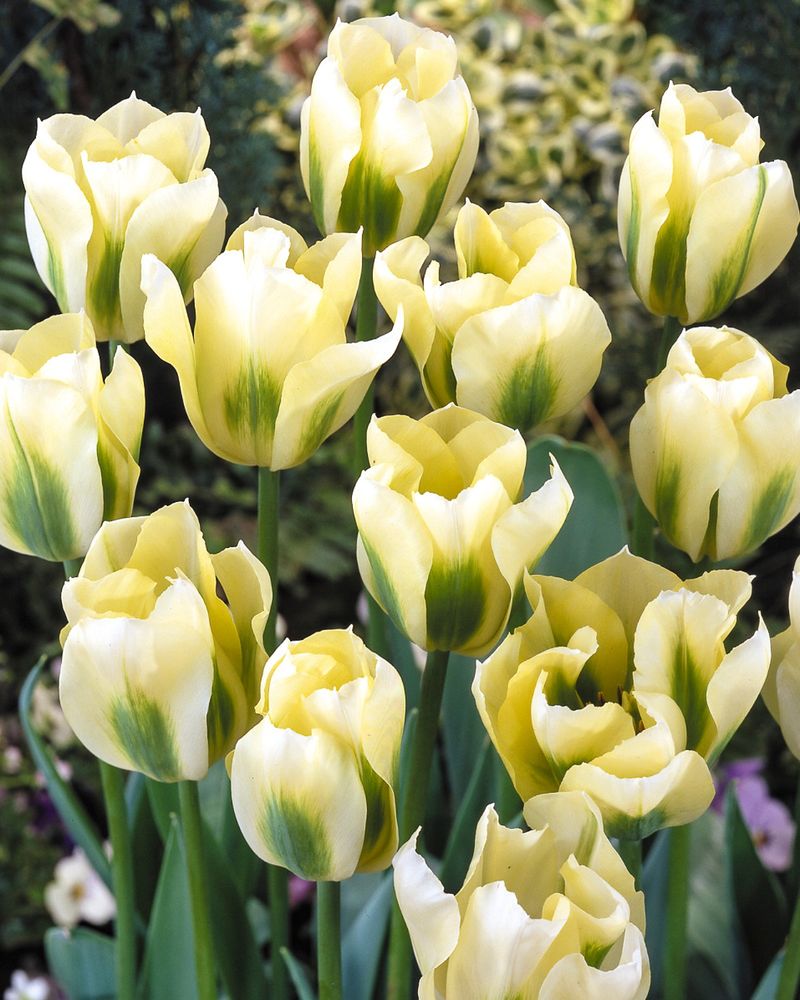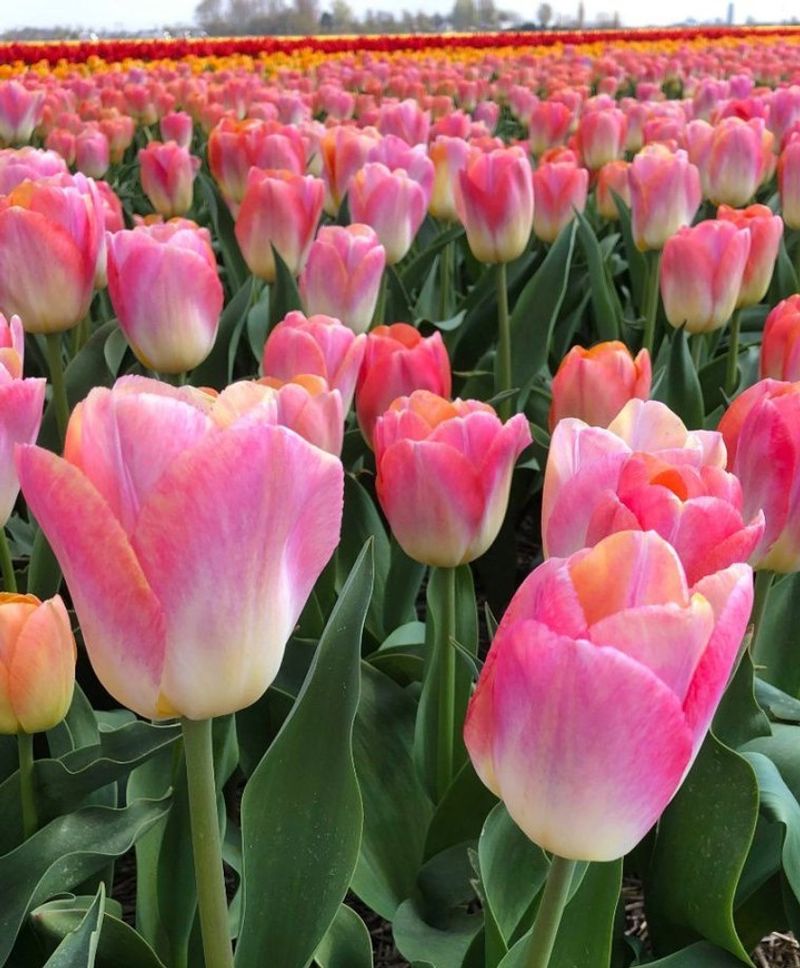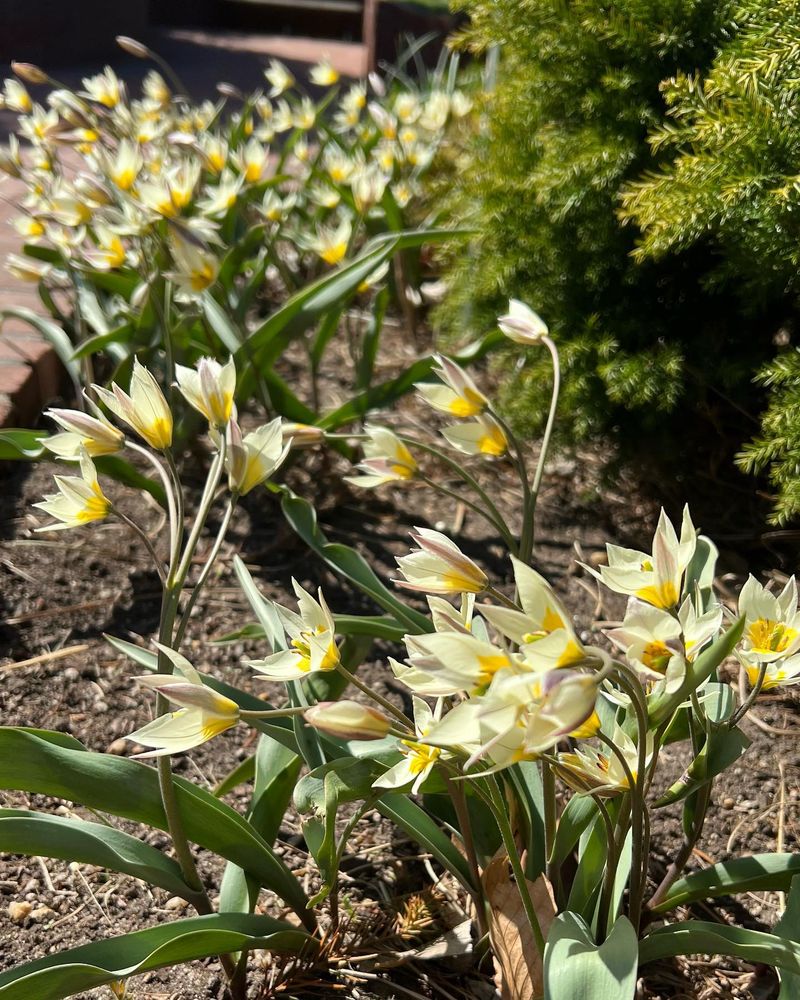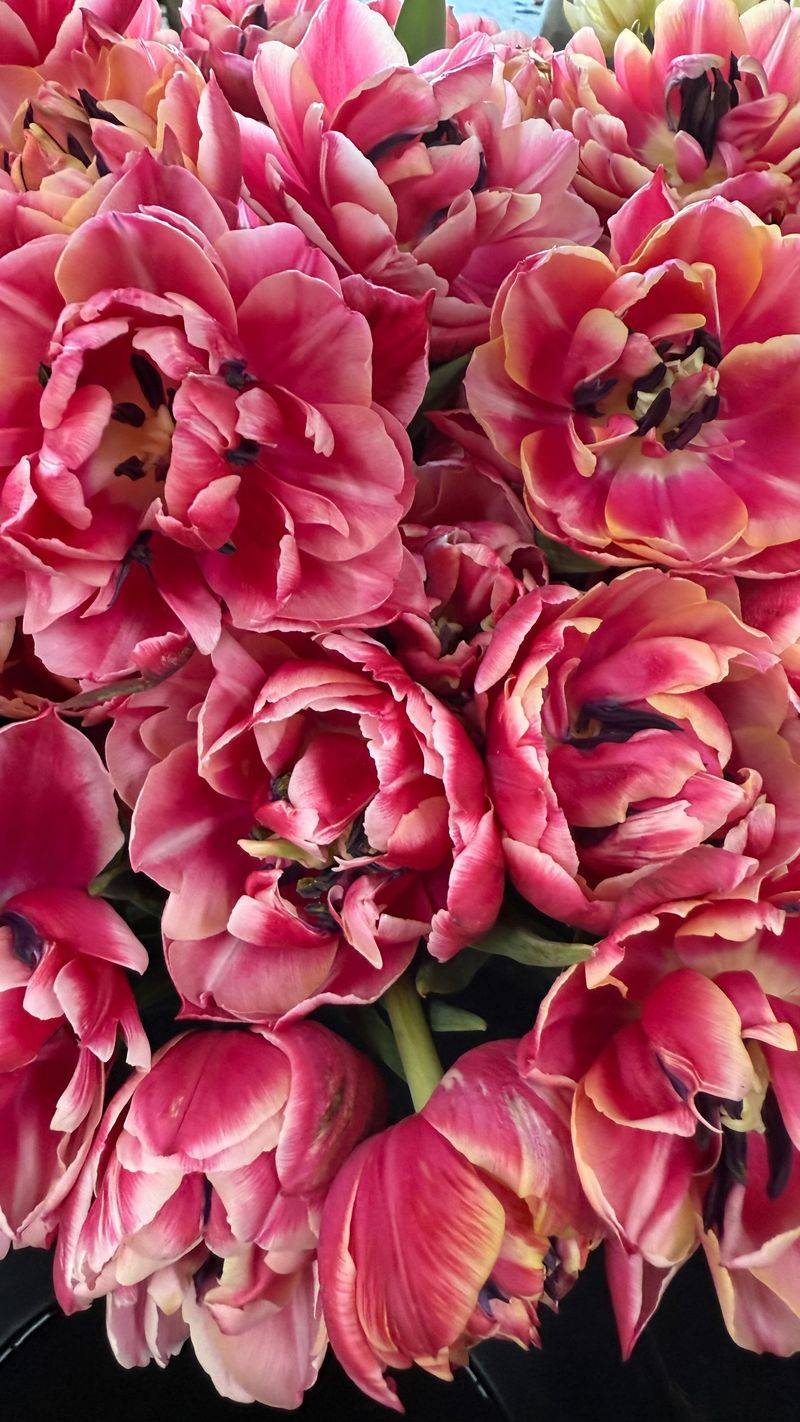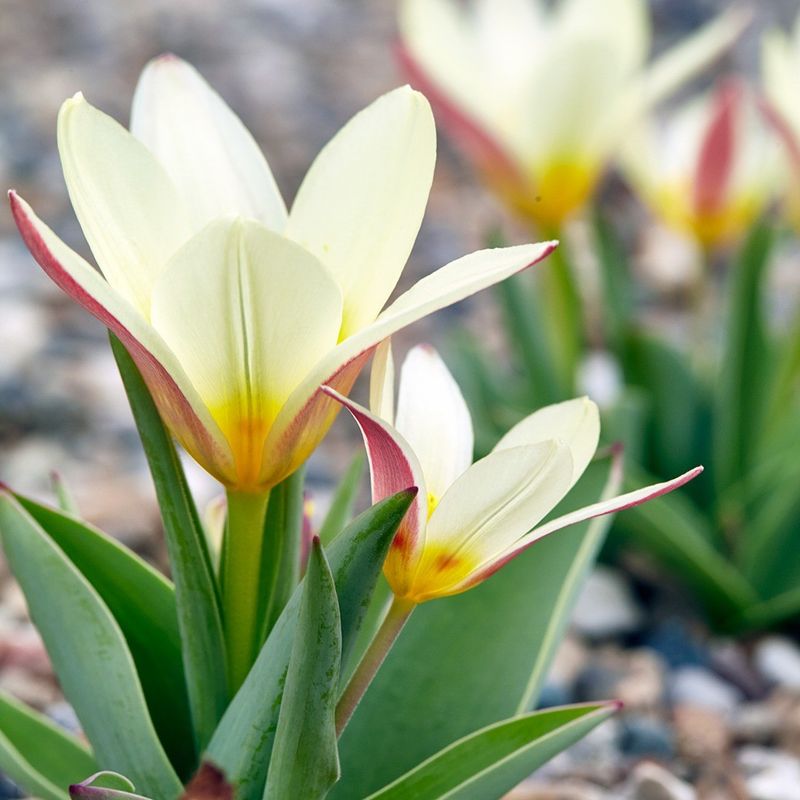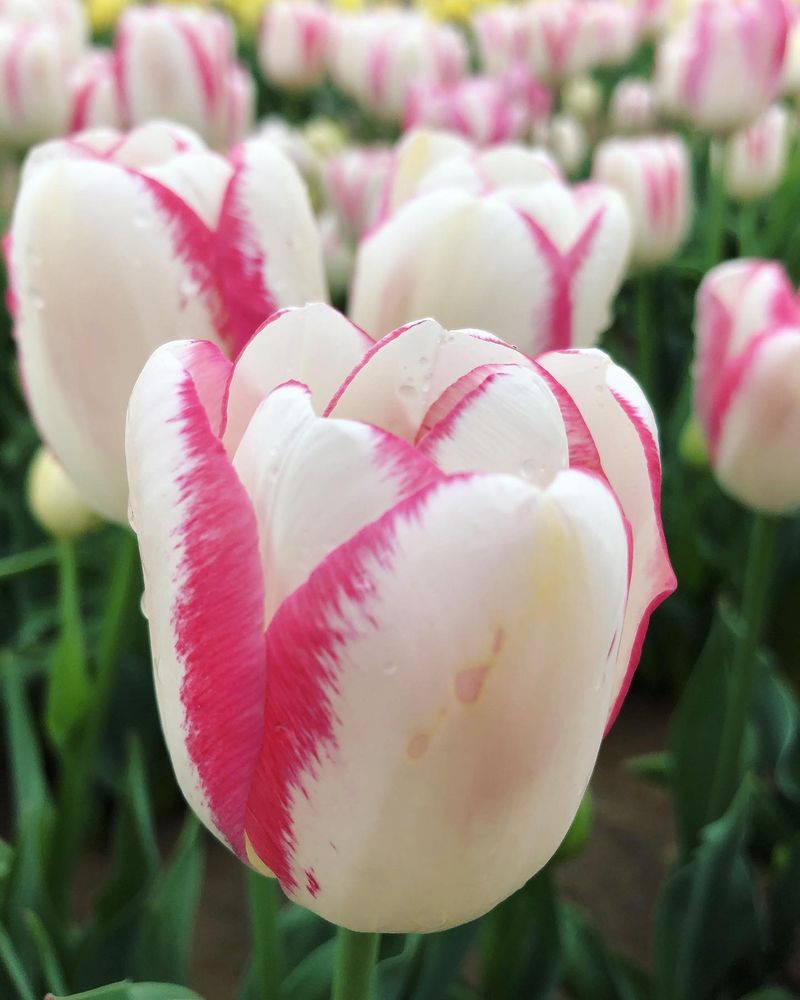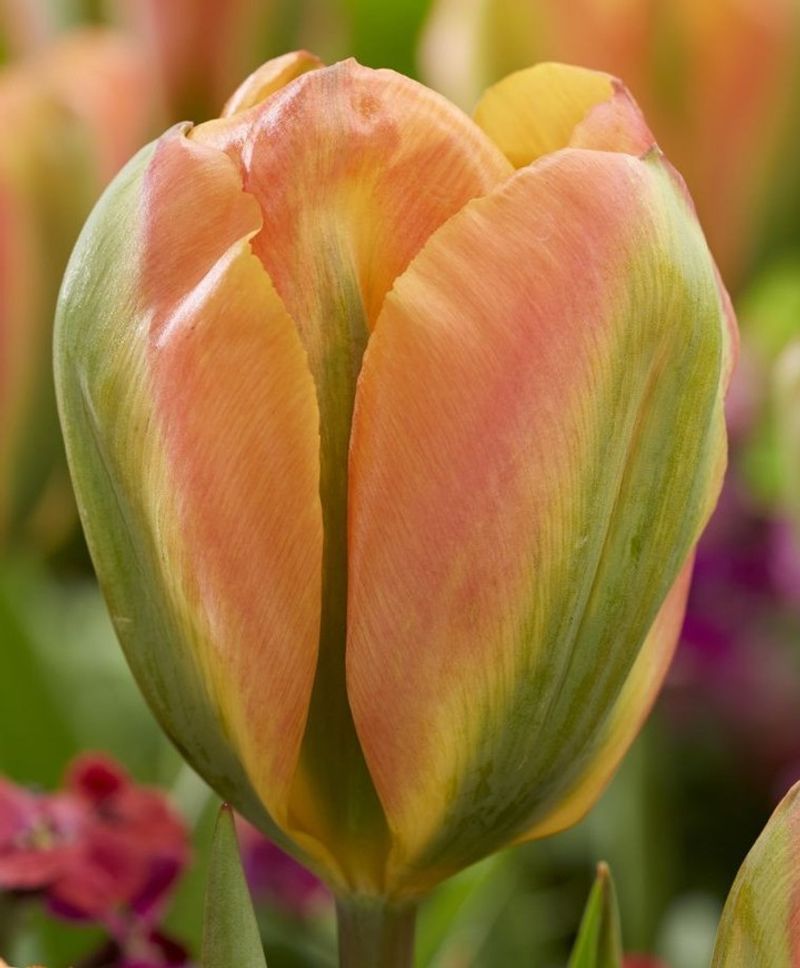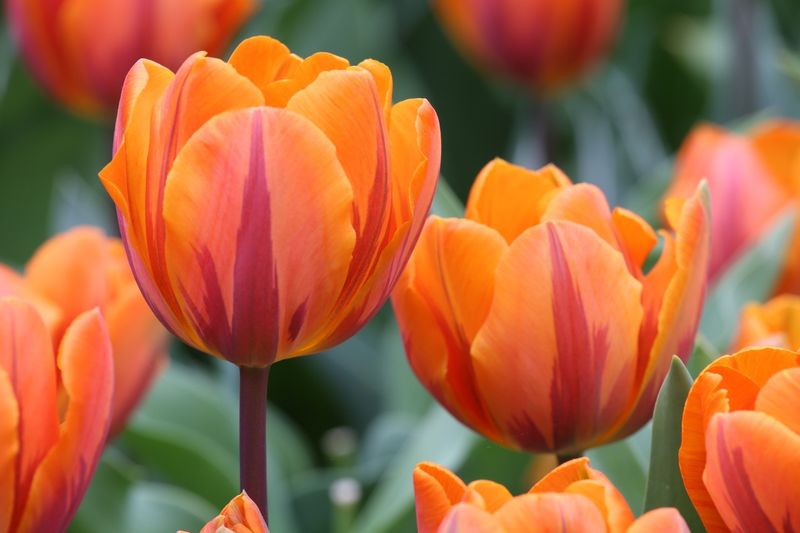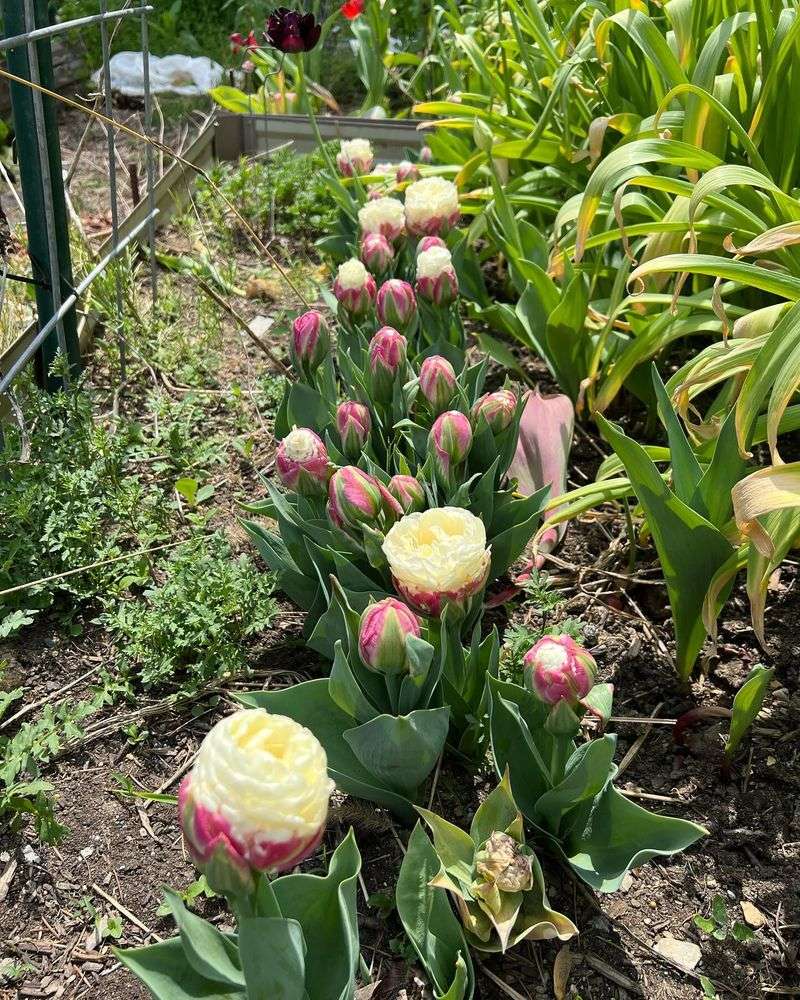Happy Tulip Day!
With so many shapes and colors, it’s tough to pick just one favorite—but these 15 varieties have definitely earned their spot in my garden.
Some are bold and dramatic, while others are soft and elegant, yet all of them bring that wow factor to spring. I’ve grown a few of these myself, and they never fail to get compliments.
If you’re looking to switch things up or simply want a garden full of charm, these picks are the perfect place to start. Get ready to fall in love with tulips all over again!
1. Queen of Night Tulips
Mysterious and elegant, these nearly-black tulips create dramatic contrast against lighter blooms. Their deep purple petals appear black in certain light, making them a conversation starter in any garden.
Plant these beauties in fall, about 6 inches deep and 4-5 inches apart. Queen of Night tulips thrive in well-draining soil with full to partial sun exposure.
2. Angelique Tulips
Resembling peonies more than traditional tulips, Angelique varieties feature soft pink, double-petaled blooms that look like fluffy clouds. Their romantic appearance makes them perfect for cottage gardens or wedding bouquets.
Give these delicate beauties a sheltered spot to protect their many petals from strong winds. Angelique tulips perform best with afternoon shade in warmer climates.
3. Parrot Tulips
Named for their feathery, twisted petals that resemble exotic bird plumage, Parrot tulips are true showstoppers. Their ruffled edges come in vibrant color combinations with streaks and flames that catch the eye from across any garden.
Support these top-heavy blooms with strategic planting near other sturdy flowers to prevent them from toppling over. Parrot tulips prefer sunny locations with afternoon shade in hotter regions.
4. Rembrandt Tulips
Flame-like streaks and feathering make these tulips living artwork in your garden. Originally caused by a virus in the 17th century, today’s Rembrandt-style tulips are bred to mimic that distinctive broken color pattern without the disease.
Group these historical beauties together for maximum visual impact rather than scattering them throughout your garden. Modern Rembrandt tulips grow best in full sun with well-draining soil.
5. Fringed Tulips
Imagine tulips wearing delicate crystal-edged petticoats and you’ll understand the charm of fringed varieties. Their crystalline edges catch light beautifully, adding texture and dimension to spring garden displays.
Plant fringed tulips where you can appreciate their intricate details up close, such as along pathways or near seating areas. These specialty tulips benefit from a layer of mulch to regulate soil temperature.
6. Lily-Flowered Tulips
Graceful and elegant, these tulips feature distinctive pointed petals that curve outward at the tips, creating a star-like or lily appearance. Their slender shape adds vertical interest and movement to garden beds when spring breezes blow.
Combine lily-flowered tulips with rounded varieties for an interesting textural contrast in your spring displays. These elegant flowers perform best in areas sheltered from harsh winds.
7. Viridiflora Tulips
Green streaks run through every petal of these unusual tulips, creating an artistic watercolor effect unlike any other variety. The green coloration remains consistent regardless of the base petal color, making them truly distinctive garden additions.
Extend your tulip season by including these late-bloomers that typically flower after many other varieties have finished. Viridiflora tulips often return for multiple years when planted in well-draining soil.
8. Darwin Hybrid Tulips
Giant blooms on sturdy stems make Darwin Hybrids the perfect choice for gardeners who want dramatic impact. Their massive flowers can reach 6 inches across on stems up to 30 inches tall, creating a bold statement in spring gardens.
Plant these giants in areas protected from strong winds to prevent their large blooms from damage. Darwin Hybrids typically perform well for multiple seasons without lifting the bulbs.
9. Species Tulips
Wild and charming, these diminutive relatives of hybridized tulips bring natural beauty and staying power to rock gardens and borders. Species tulips are closest to the original wild tulips found in Central Asia, with a delicate, star-like appearance.
Plant these hardy little gems in well-draining soil where they can remain undisturbed for years. Unlike their hybrid cousins, species tulips reliably return and even multiply over time.
10. Double Late Tulips
Resembling lush peonies, these fully double blooms pack maximum petals into each flower for an opulent display. Their late-season flowering extends the tulip show when many other varieties have finished, keeping your garden colorful longer.
Provide double late tulips with protection from heavy rain that could damage their densely-packed petals. Their peony-like appearance pairs beautifully with actual peonies that emerge as the tulips bloom.
11. Kaufmanniana Tulips
Often called water lily tulips, these early bloomers feature petals that open flat in the sunshine, revealing colorful centers. Their low growth habit (usually 4-8 inches) makes them perfect for rock gardens or front edges of borders.
Expect these eager performers to be among the first tulips to greet spring, sometimes blooming alongside crocuses. Kaufmanniana tulips naturalize well, returning and even multiplying in favorable conditions.
12. Flaming Purissima Tulips
Starting creamy white and developing raspberry-pink flames as they mature, these tulips put on a color-changing show throughout their bloom period. The dramatic transformation means you’ll feel like you have different flowers each week.
Plant Flaming Purissima in groups of at least 15 bulbs to create a stunning mass display of their color evolution. These tulips perform particularly well in cooler climates where their blooms last longer.
13. Green Star Tulips
Slender green stripes run through white petals, creating a fresh, modern look unlike traditional tulip varieties. The striking green and white combination feels like a breath of spring air in any garden setting.
Pair Green Star tulips with purple or pink varieties for a contemporary color scheme that pops in spring displays. These unusual blooms last exceptionally long, both in the garden and in cut arrangements. styles.
14. Princess Irene Tulips
Fiery orange petals with purple flames create a sunset-like glow in spring gardens when Princess Irene tulips bloom. Their warm tones stand out dramatically against cool spring greenery, creating focal points wherever they’re planted.
Consider underplanting these stunners with blue forget-me-nots for a classic complementary color combination. Princess Irene tulips have a lovely sweet fragrance that many modern tulips lack.
15. Ice Cream Tulips
Looking almost good enough to eat, Ice Cream tulips are layered with surprise. Their pink outer petals open to reveal a white, peony-like center that rises like a scoop of vanilla atop a cone. It’s an eye-catching novelty that never fails to draw attention.
Plant these whimsical blooms in small groups where their unique form can be appreciated up close. Ice Cream tulips do best in well-drained soil with full to partial sun, and benefit from shelter from strong winds due to their heavy blooms.

